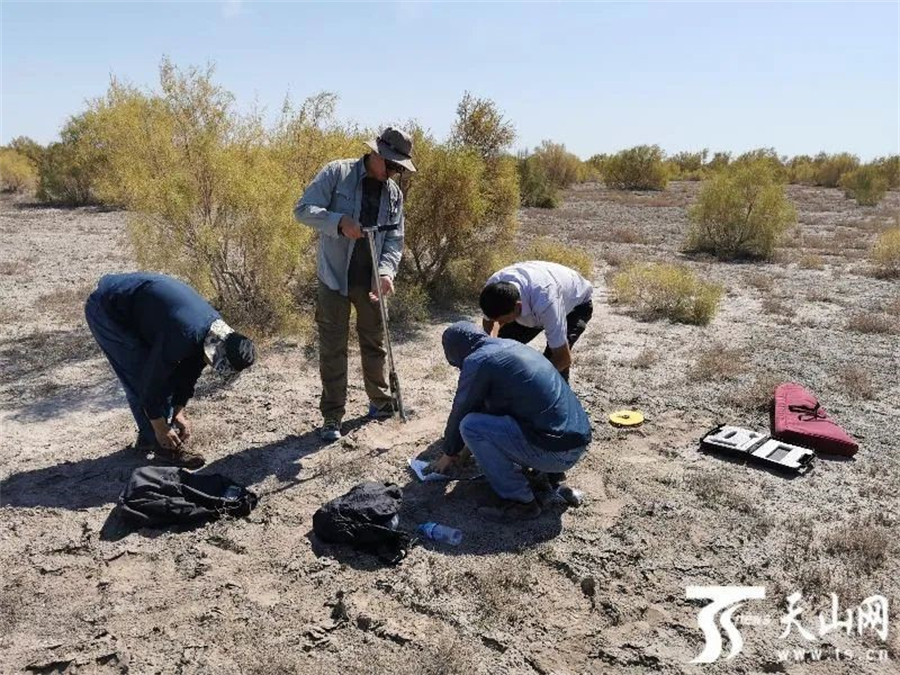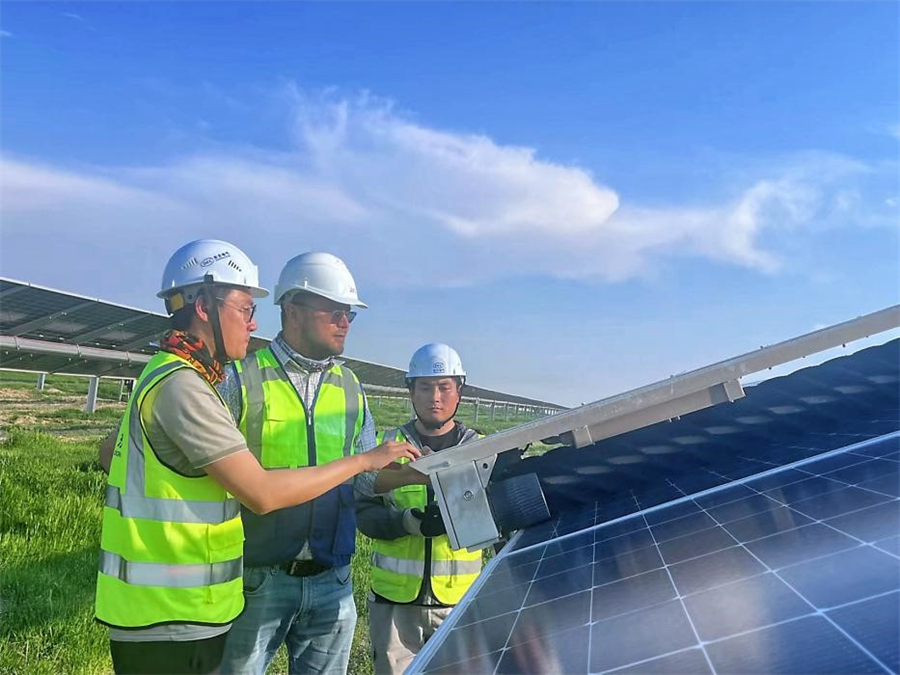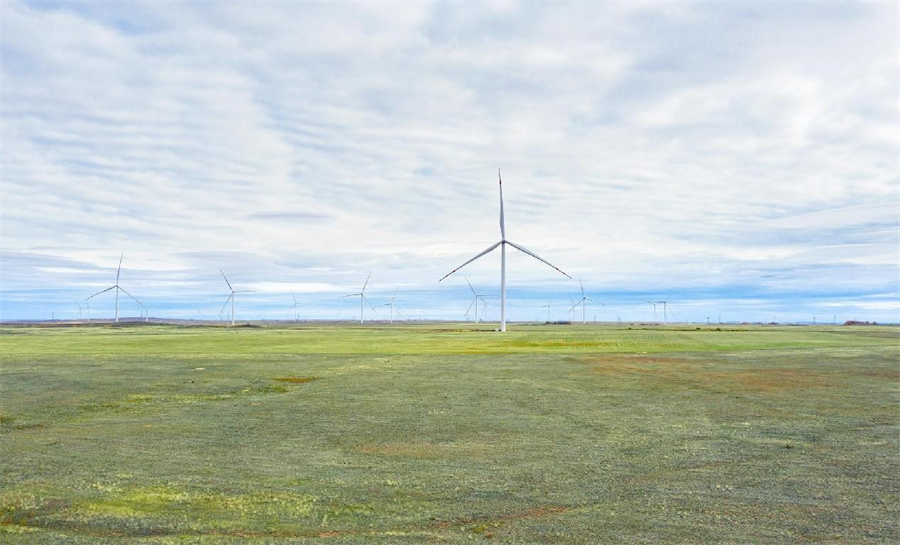China, Central Asia see remarkable achievements in green cooperation

Photo shows the modernization project of Shymkent Oil Refinery in Kazakhstan undertaken by a Chinese company. [Photo by Ye Erlan]
Recently, a cargo train carrying 50 twenty-foot equivalent units of photovoltaic (PV) modules departed from Wuhan, central China's Hubei province for Tashkent, capital of Uzbekistan.
As the first PV products-dedicated freight train between Wuhan and Central Asia, it will further promote China-Central Asia green cooperation.

Chinese researchers undertake an ecological investigation near the Aral Sea. [Photo from ts.cn]
Green has become the defining feature of the Belt and Road cooperation between China and Central Asia, as reflected by the efforts made by China in recent years to assist Central Asian countries in advancing energy transition and ecological conservation, from contracting green energy infrastructure projects to promoting water-efficient irrigation techniques, and to engaging in the ecological governance of the Aral Sea.
Central Asia boasts rich wind, solar, water and other renewable energy resources. As of the end of 2022, the total installed capacity of renewable energy projects invested and built by Chinese enterprises in Kazakhstan, including the 100-MW Zhanatas wind farm, Turgusun hydropower plant, and a wind project in Akmola Region, had exceeded 1,000 MW.

At the 220 MWac Samarkand solar PV plant in Uzbekistan, a Chinese engineer is training local maintenance staff on how to use an AI-enabled cleaning robot. [Photo by Chang Jin]
The 220 MWac Samarkand solar PV plant constructed by a Chinese company in Uzbekistan, is expected to provide electricity to 264,000 local households and reduce approximately 237,000 tons of carbon dioxide emissions annually.
"With accelerated development of renewable energy projects and increased attention to environmental protection in the traditional energy sector, green development has become a highlight of China-Central Asia energy cooperation," said Yang Jin, a researcher with the Institute of Russian, Eastern European & Central Asian Studies, Chinese Academy of Social Sciences (CAAS).

Photo shows a wind farm in Kazakhstan's Akmola Region invested and built by a Chinese company. [Photo by Li Qiang/People's Daily]
Besides, Chinese new energy vehicles (NEVs) are favored by people in Central Asian countries, Yang told People's Daily, adding that some Chinese automakers have set up factories in Central Asia for localized production in cooperation with local enterprises.
The Aral Sea, located in the border region between Uzbekistan and Kazakhstan, was once the fourth largest lake in the world. It faces a severe ecological crisis due to global warming and multiple human factors. According to statistics, the Aral Sea's area has decreased by over 90 percent since 1960, with a large portion of the lakebed turning into bare land and salt flats, or covered by salt crust.
Remarkable progress has been made in the cooperative efforts of China and Central Asia to promote the ecological restoration of the Aral Sea. China has set up automatic meteorological and water quality monitoring networks in the Aral Sea drainage basin, planted halophytes to lower the salt content in local soil, promoted drip irrigation techniques and established big data analysis centers and joint labs with local universities. Chinese solutions to the ecological treatment of the Aral Sea have been recognized and welcomed by regional countries.
Yang attributed the prospering China-Central Asia cooperation on green development to their shared strategic vision of developing green economy and enhancing sustainable development capabilities, along with their high complementarity.
He said Central Asian countries, boasting abundant traditional energy reserves and great potential for developing renewable energy, are seeking to transition from an extensive and high-energy consumption development model to a green and low-carbon economy. China has a vast energy consumption market and stands ready to engage in international cooperation on green development.
With the technological edge in sectors such as solar energy, wind energy, hydropower, and electric vehicles, China can support Central Asian countries in their green transition, Yang noted. He said that the two sides share the same vision and can leverage their respective strengths in green cooperation, which resonates with the global trend of green development.
China and Central Asian countries are friendly neighbors and comprehensive strategic partners. The deepening collaboration between the two sides in recent years has paved the way for a more holistic approach to green cooperation.
Green cooperation and the development of green economy have been key discussions in Belt and Road cooperation, the China-Central Asia Summit, and the Shanghai Cooperation Organization. These cooperation mechanisms provide important platforms for dialogue and consensus-building in China-Central Asia green cooperation.
"The green cooperation between China and Central Asian countries has been expanding in both areas and scope. The cooperation between the two sides in digital economy, cross-border e-commerce, and tourism is also deepening, all contributing to the development of a Green Silk Road," Yang said.
Moving forward, there remains significant untapped potential for China-Central Asia green cooperation, which will inject new impetus into the economic development of both sides and their cooperation across different sectors.
























